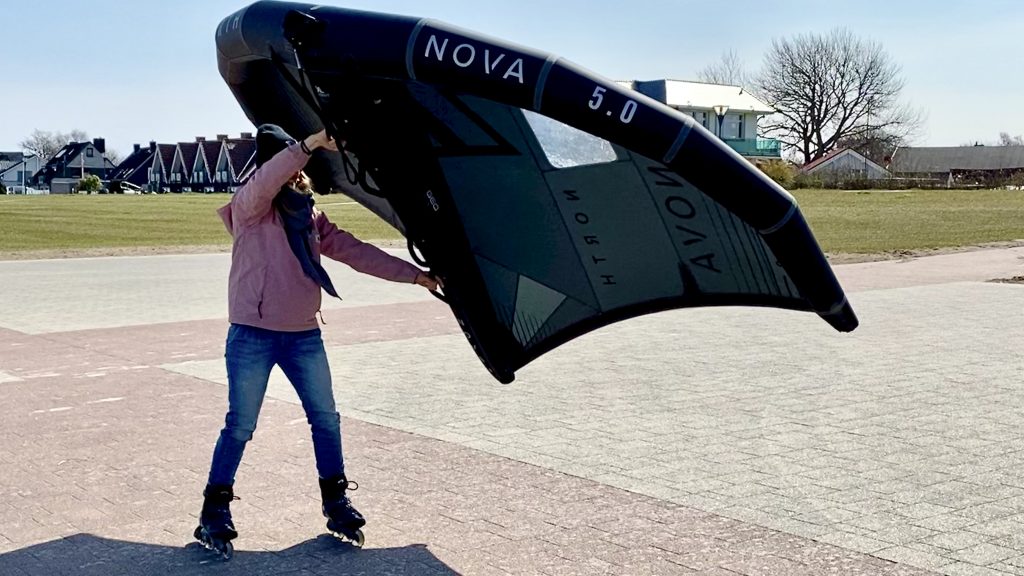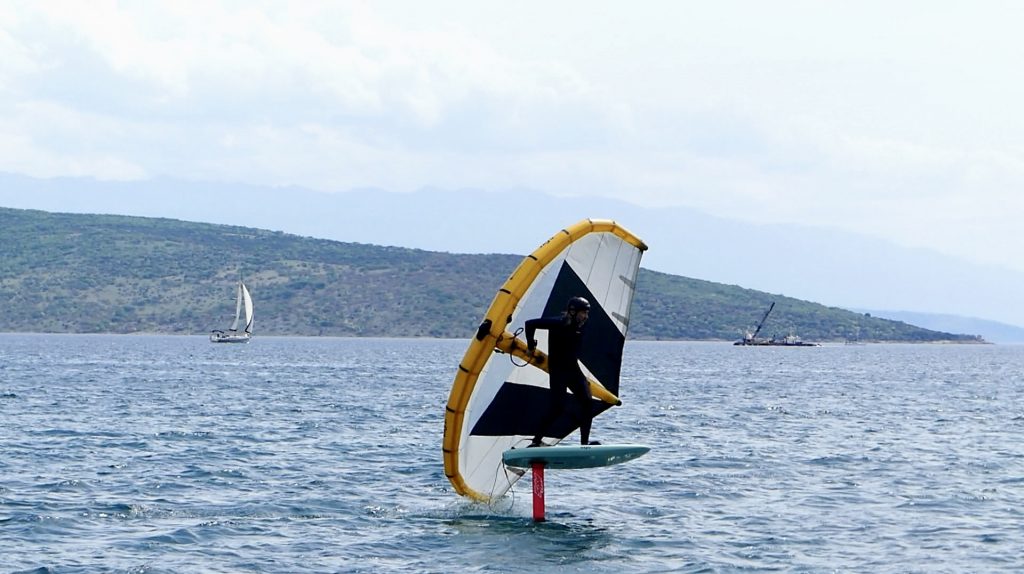Are you unsure whether wingsurfing / wingfoiling is right for you? Or are you enthusiastic, but still need a few more or less factual arguments to justify starting or switching to wingsurfing? Here you will find a few advantages that we think are considerable compared to other wind and water sports:
Equipment: Small! Light! Compact! Manageable!
You need comparatively little equipment for wingsurfing: a compact board, a foil and of course a wing are all you need – at least to get started. Of course, you’ll soon need more. As your skills progress, most people want a wider range of wing sizes for different wind conditions. In addition, sooner or later the desire for faster (smaller) wings and possibly longer masts for the foil arises.
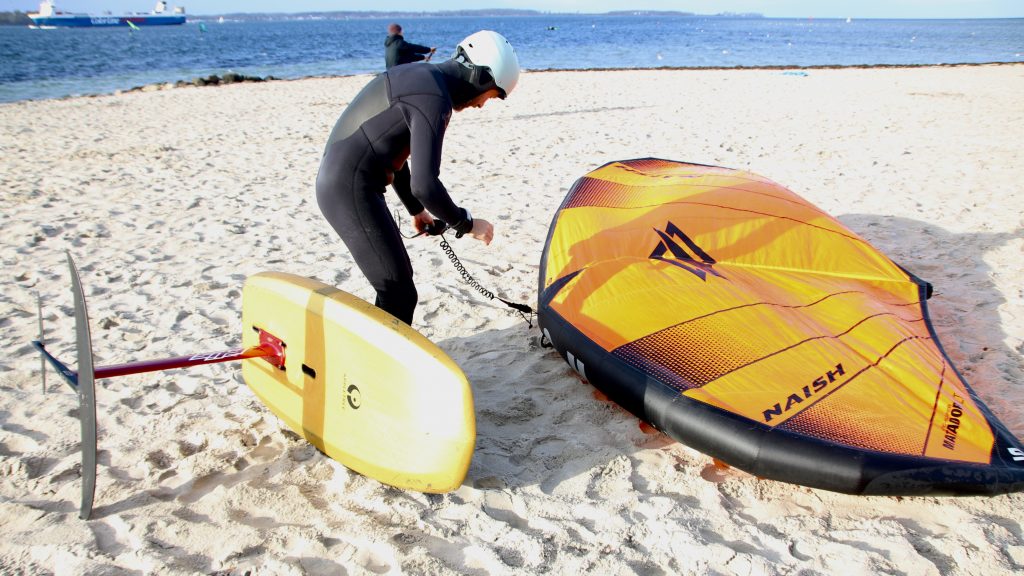
Gear Transportion: Easy!
Transporting the wing foil stuff is comparatively easy – especially compared to windsurfing, there is less small and large material to transport. The board fits in any small car or bicycle trailer. The foil can be completely dismantled and then stowed in a larger briefcase. And the Wing usually fits into a very compact bag. It can also be used for longer journeys on foot: The wing on your back, the foil in one hand and the board in the other. Let’s go!
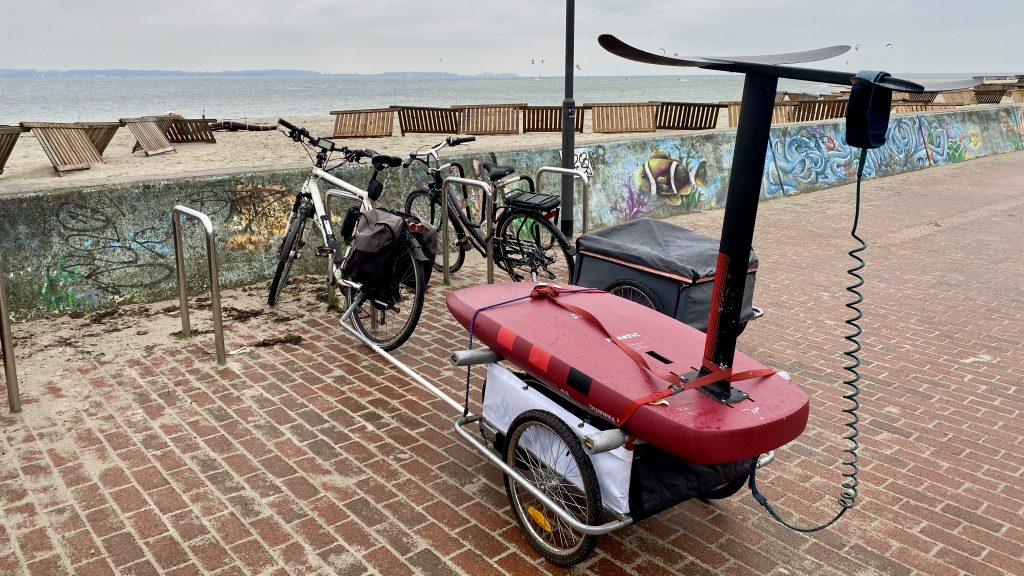
Setup: Simple!
Setting up the equipment is also much easier than with windsurfing or kitesurfing. You don’t need to trim anything or roll out any lines. Simply take the wing out of the bag and inflate it. Assemble the foil and attach it to the board. It only takes a few minutes. Done!
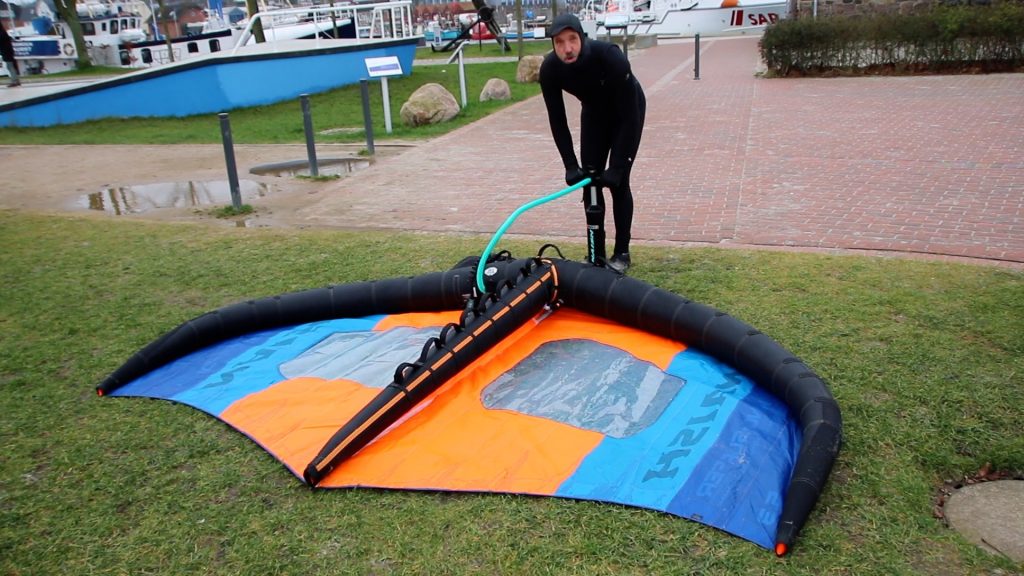
Getting started: Easy!
Getting into the sport is comparatively easy. Anyone who can stand on a SUP can simply add the wing and off you go! It’s important to start with a board that has enough volume. The rule of thumb for beginners is: own weight plus at least 40 liters. The first successes can then be achieved in the very first session. If you also have experience from other wind and water sports, especially windsurfing, you will usually have it figured out after ten minutes. And if you also have foil experience and are very sporty, you can even get onto the foil in the first session.
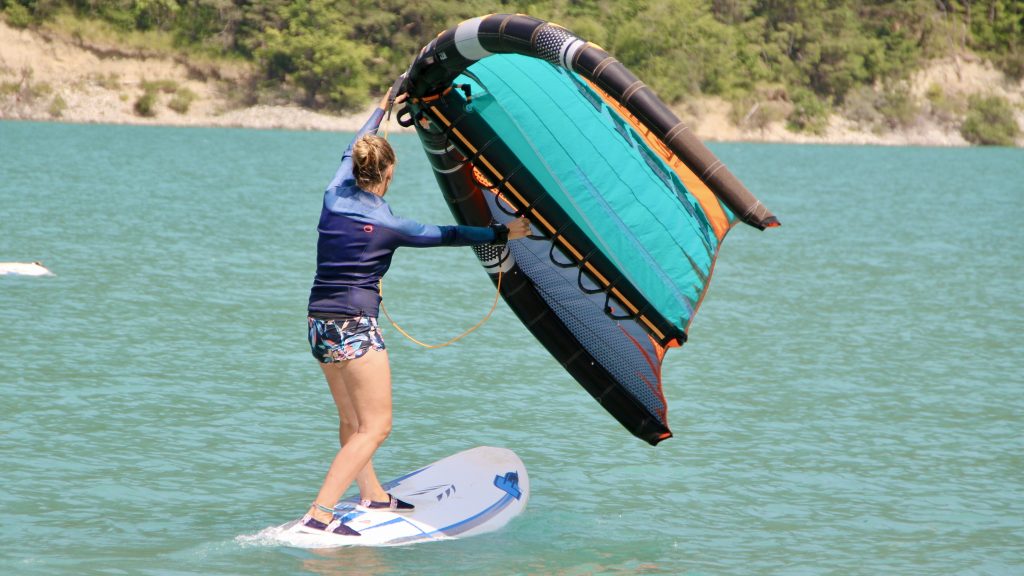
Safety: High!
No kitesurfing-style lines that could get tangled up somewhere; no firmly attached harness that could throw you ashore with the lines. No mast like in windsurfing that could hit you on the head. Skidding falls are virtually impossible, as is the risk of getting caught under the sail.
being trapped under the sail. It is almost impossible to injure yourself or others with the wing!
The situation is of course somewhat different when the foil is also used. This is naturally very hard and sharp-edged. You should wear a helmet and impact protection vest at least for this reason. It goes without saying that you should also show special consideration for others. Nevertheless, the control of the foil is also much better here compared to windsurfing or kite foiling. Wingsurf foiling is therefore also comparatively safer.
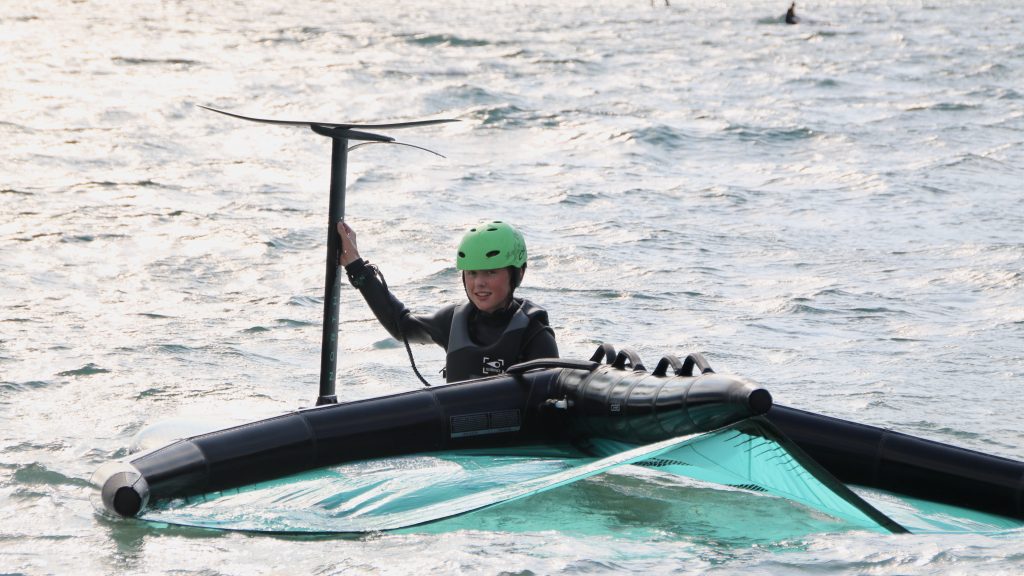
Range of use & variety: Huge!
The range of use of the wing on water and on land is extremely diverse. On land, it is great fun in combination with a skateboard or mountain board or even on inline skates. On the water, it has many uses for SUP boarders, surfers and, of course, wingfoilers. With the SUP, it’s just fun or helps you get into the waves to ride them. This also applies to the foil board, with which you can also have a lot of fun in almost all wind conditions on the sea, river and lake. Wingsurfing is possible from a wind speed of eight to ten knots, it’s really fun from twelve knots – and it’s (almost) open at the top!
